 W
WPopulation genetics is a subfield of genetics that deals with genetic differences within and between populations, and is a part of evolutionary biology. Studies in this branch of biology examine such phenomena as adaptation, speciation, and population structure.
 W
WThe axolotl, Ambystoma mexicanum, also known as the Mexican walking fish, is a neotenic salamander related to the tiger salamander. Although colloquially known as a "walking fish", the axolotl is not a fish but an amphibian. The species was originally found in several lakes, such as Lake Xochimilco underlying Mexico City. Axolotls are unusual among amphibians in that they reach adulthood without undergoing metamorphosis. Instead of developing lungs and taking to the land, adults remain aquatic and gilled.
 W
WIn population genetics, the Balding–Nichols model is a statistical description of the allele frequencies in the components of a sub-divided population. With background allele frequency p the allele frequencies, in sub-populations separated by Wright's FST F, are distributed according to independent draws from
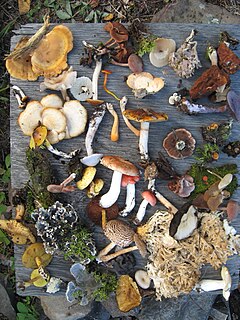 W
WBiodiversity is the variety and variability of life on Earth. Biodiversity is typically a measure of variation at the genetic, species, and ecosystem level. Terrestrial biodiversity is usually greater near the equator, which is the result of the warm climate and high primary productivity. Biodiversity is not distributed evenly on Earth, and is richer in the tropics. These tropical forest ecosystems cover less than 10 percent of earth's surface, and contain about 90 percent of the world's species. Marine biodiversity is usually higher along coasts in the Western Pacific, where sea surface temperature is highest, and in the mid-latitudinal band in all oceans. There are latitudinal gradients in species diversity. Biodiversity generally tends to cluster in hotspots, and has been increasing through time, but will be likely to slow in the future.
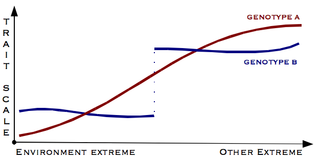 W
WCanalisation is a measure of the ability of a population to produce the same phenotype regardless of variability of its environment or genotype. It is a form of evolutionary robustness. The term was coined in 1942 by C. H. Waddington to capture the fact that "developmental reactions, as they occur in organisms submitted to natural selection...are adjusted so as to bring about one definite end-result regardless of minor variations in conditions during the course of the reaction". He used this word rather than robustness to take into account that biological systems are not robust in quite the same way as, for example, engineered systems.
 W
WThe Causes of Evolution is a 1932 book on evolution by J.B.S. Haldane, based on a series of January 1931 lectures entitled "A Re-examination of Darwinism". It was influential in the founding of population genetics and the modern synthesis.
 W
WChillingham cattle, also known as Chillingham wild cattle, are a breed of cattle that live in a large enclosed park at Chillingham Castle, Northumberland, England. In 2009 the cattle were described as "about 90 animals in Chillingham, which inhabit a very large park that has existed since the Middle Ages". The herd has remained remarkably genetically isolated for hundreds of years, surviving despite inbreeding depression due to the small population. There is also a small reserve herd of about 20 animals located on Crown Estate land near Fochabers, North East Scotland.
 W
WClonal interference is a phenomenon in evolutionary biology, related to the population genetics of organisms with significant linkage disequilibrium, especially asexually reproducing organisms. The idea of clonal interference was introduced by American geneticist Hermann Joseph Muller in 1932. It explains why beneficial mutations can take a long time to get fixated or even disappear in asexually reproducing populations. As the name suggests, clonal interference occurs in an asexual lineage ("clone") with a beneficial mutation. This mutation would be likely to get fixed if it occurred alone, but it may fail to be fixed, or even be lost, if another beneficial-mutation lineage arises in the same population; the multiple clones interfere with each other.
 W
WConservation genetics is an interdisciplinary subfield of population genetics that aims to understand the dynamics of genes in populations principally to avoid extinction. Therefore, it applies genetic methods to the conservation and restoration of biodiversity. Researchers involved in conservation genetics come from a variety of fields including population genetics, molecular ecology, biology, evolutionary biology, and systematics. Genetic diversity is one of the three fundamental levels of biodiversity, so it is directly important in conservation. Genetic variability influences both the health and long-term survival of populations because decreased genetic diversity has been associated with reduced fitness, such as high juvenile mortality, diminished population growth, reduced immunity, and ultimately, higher extinction risk.
 W
WIn evolutionary biology, conserved sequences are identical or similar sequences in nucleic acids or proteins across species, or within a genome, or between donor and receptor taxa. Conservation indicates that a sequence has been maintained by natural selection.
 W
WA de Finetti diagram is a ternary plot used in population genetics. It is named after the Italian statistician Bruno de Finetti (1906–1985) and is used to graph the genotype frequencies of populations, where there are two alleles and the population is diploid. It is based on an equilateral triangle, and Viviani's theorem concerning any point within the triangle, and the three lines from that point that are perpendicular to the sides of the triangle. The sum of the lengths of the lines is a fixed value, regardless of the position of the point. This value is set to be 1.
 W
WFitness is the quantitative representation of natural and sexual selection within evolutionary biology. It can be defined either with respect to a genotype or to a phenotype in a given environment. In either case, it describes individual reproductive success and is equal to the average contribution to the gene pool of the next generation that is made by individuals of the specified genotype or phenotype. The fitness of a genotype is manifested through its phenotype, which is also affected by the developmental environment. The fitness of a given phenotype can also be different in different selective environments.
 W
WIn evolutionary biology, fitness landscapes or adaptive landscapes are used to visualize the relationship between genotypes and reproductive success. It is assumed that every genotype has a well-defined replication rate. This fitness is the "height" of the landscape. Genotypes which are similar are said to be "close" to each other, while those that are very different are "far" from each other. The set of all possible genotypes, their degree of similarity, and their related fitness values is then called a fitness landscape. The idea of a fitness landscape is a metaphor to help explain flawed forms in evolution by natural selection, including exploits and glitches in animals like their reactions to supernormal stimuli.
 W
WA fixed allele is an allele that is the only variant that exists for that gene in all the population. A fixed allele is homozygous for all members of the population. The term allele normally refers to one variant gene out of several possible for a particular locus in the DNA. When all but one allele go extinct and only one remains, that allele is said to be fixed.
 W
WIn population genetics, the founder effect is the loss of genetic variation that occurs when a new population is established by a very small number of individuals from a larger population. It was first fully outlined by Ernst Mayr in 1942, using existing theoretical work by those such as Sewall Wright. As a result of the loss of genetic variation, the new population may be distinctively different, both genotypically and phenotypically, from the parent population from which it is derived. In extreme cases, the founder effect is thought to lead to the speciation and subsequent evolution of new species.
 W
WA gene family is a set of several similar genes, formed by duplication of a single original gene, and generally with similar biochemical functions. One such family are the genes for human hemoglobin subunits; the ten genes are in two clusters on different chromosomes, called the α-globin and β-globin loci. These two gene clusters are thought to have arisen as a result of a precursor gene being duplicated approximately 500 million years ago.
 W
WIn population genetics, gene flow is the transfer of genetic material from one population to another. If the rate of gene flow is high enough, then two populations will have equivalent allele frequencies and therefore can be considered a single effective population. It has been shown that it takes only "one migrant per generation" to prevent populations from diverging due to drift. Populations can diverge due to selection even when they are exchanging alleles, if the selection pressure is strong enough. Gene flow is an important mechanism for transferring genetic diversity among populations. Migrants change the distribution of genetic diversity among populations, by modifying allele frequencies. High rates of gene flow can reduce the genetic differentiation between the two groups, increasing homogeneity. For this reason, gene flow has been thought to constrain speciation and prevent range expansion by combining the gene pools of the groups, thus preventing the development of differences in genetic variation that would have led to differentiation and adaption. In some cases dispersal resulting in gene flow may also result in the addition of novel genetic variants under positive selection to the gene pool of a species or population
 W
WGenetic diversity is the total number of genetic characteristics in the genetic makeup of a species, it ranges widely from the number of species to differences within species and can be attributed to the span of survival for a species. It is distinguished from genetic variability, which describes the tendency of genetic characteristics to vary.
 W
WGenetic drift is the change in the frequency of an existing gene variant (allele) in a population due to random sampling of organisms. The alleles in the offspring are a sample of those in the parents, and chance has a role in determining whether a given individual survives and reproduces. A population's allele frequency is the fraction of the copies of one gene that share a particular form.
 W
WGenetic variation is the difference in DNA among individuals or the differences between populations. There are multiple sources of genetic variation, including mutation and genetic recombination. The mutation is the ultimate source of genetic variation, but mechanisms such as sexual reproduction and genetic drift contribute to it as well.
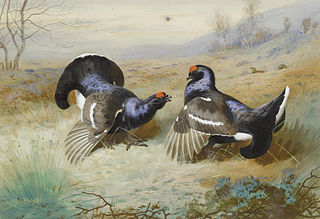 W
WGroup selection is a proposed mechanism of evolution in which natural selection acts at the level of the group, instead of at the more conventional level of the individual.
 W
WHaldane's dilemma, also known as "the waiting time problem", is a limit on the speed of beneficial evolution, calculated by J. B. S. Haldane in 1957. Before the invention of DNA sequencing technologies, it was not known how much polymorphism DNA harbored, however, alloenzymes were beginning to make it clear that substantial polymorphism existed. This was puzzling because the amount of polymorphism known to exist seemed to exceed the theoretical limits that Haldane calculated, that is the limits imposed if polymorphisms present in the population generally influenced an organism's fitness. Motoo Kimura's landmark paper on neutral theory in 1968 built on Haldane's work to suggest that most molecular evolution is neutral, resolving the dilemma. Although neutral evolution remains the consensus theory among modern biologists, and thus Kimura's resolution of Haldane's dilemma is widely regarded as correct, some biologists argue that adaptive evolution explains a large fraction of substitutions in protein coding sequence, and they propose alternative solutions to Haldane's dilemma.
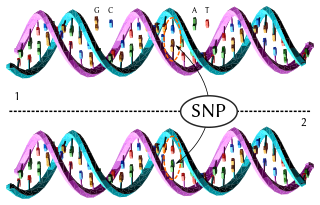 W
WA haplotype is a group of alleles in an organism that are inherited together from a single parent.
 W
WIn population genetics, the Hardy–Weinberg principle, also known as the Hardy–Weinberg equilibrium, model, theorem, or law, states that allele and genotype frequencies in a population will remain constant from generation to generation in the absence of other evolutionary influences. These influences include genetic drift, mate choice, assortative mating, natural selection, sexual selection, mutation, gene flow, meiotic drive, genetic hitchhiking, population bottleneck, founder effect and inbreeding.
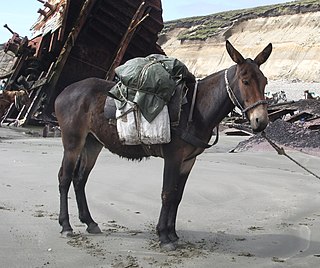 W
WIn biology, a hybrid is the offspring resulting from combining the qualities of two organisms of different breeds, varieties, species or genera through sexual reproduction. Hybrids are not always intermediates between their parents, but can show hybrid vigour, sometimes growing larger or taller than either parent. The concept of a hybrid is interpreted differently in animal and plant breeding, where there is interest in the individual parentage. In genetics, attention is focused on the numbers of chromosomes. In taxonomy, a key question is how closely related the parent species are.
 W
WThe hybrid iguana is a first-generation hybrid, the result of intergeneric breeding between a male marine iguana and a female Galapagos land iguana on South Plaza Island in the Galápagos Islands, where the territories of the two species overlap.
 W
WA hybrid swarm is a population of hybrids that has survived beyond the initial hybrid generation, with interbreeding between hybrid individuals and backcrossing with its parent types. Such population are highly variable, with the genetic and phenotypic characteristics of individuals ranging widely between the two parent types. Hybrid swarms thus blur the boundary between the parent taxa. Precise definitions of which populations can be classified as hybrid swarms vary, with some specifying simply that all members of a population should be hybrids, while others differ in whether all members should have the same or different levels of hybridization.
 W
WA DNA segment is identical by state (IBS) in two or more individuals if they have identical nucleotide sequences in this segment. An IBS segment is identical by descent (IBD) in two or more individuals if they have inherited it from a common ancestor without recombination, that is, the segment has the same ancestral origin in these individuals. DNA segments that are IBD are IBS per definition, but segments that are not IBD can still be IBS due to the same mutations in different individuals or recombinations that do not alter the segment.
 W
WInbreeding is the production of offspring from the mating or breeding of individuals or organisms that are closely related genetically. By analogy, the term is used in human reproduction, but more commonly refers to the genetic disorders and other consequences that may arise from expression of deleterious or recessive traits resulting from incestuous sexual relationships and consanguinity.
 W
WA dingo–dog hybrid is a hybrid cross between a dingo and a domestic dog. The current population of free ranging domestic dogs in Australia is now probably higher than in the past. However, the proportion of the so-called "pure" dingoes has been on the decrease over the last few decades due to hybridisation and is regarded as further decreasing.
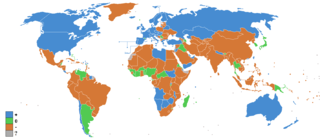 W
WInternational migration occurs when people cross state boundaries and stay in the host state for some minimum length of time. Migration occurs for many reasons. Many people leave their home countries in order to look for economic opportunities in another country. Others migrate to be with family members who have migrated or because of political conditions in their countries. Education is another reason for international migration, as students pursue their studies abroad. While there are several different potential systems for categorizing international migrants, one system organizes them into nine groups: temporary labor migrants; irregular, illegal, or undocumented migrants; highly skilled and business migrants; refugees; asylum seekers; forced migration; family members; return migrants; and long-term, low-skilled migrants. These migrants can also be divided into two large groups, permanent and temporary. Permanent migrants intend to establish their permanent residence in a new country and possibly obtain that country’s citizenship. Temporary migrants intend only to stay for a limited periods of time; perhaps until the end of a particular program of study or for the duration of a their work contract or a certain work season. Both types of migrants have a significant effect on the economies and societies of the chosen destination country and the country of origin.
 W
WIsolation by distance (IBD) is a term used to refer to the accrual of local genetic variation under geographically limited dispersal. The IBD model is useful for determining the distribution of gene frequencies over a geographic region. Both dispersal variance and migration probabilities are variables in this model and both contribute to local genetic differentiation. Isolation by distance is usually the simplest model for the cause of genetic isolation between populations. Evolutionary biologists and population geneticists have been exploring varying theories and models for explaining population structure. Yoichi Ishida compares two important theories of isolation by distance and clarifies the relationship between the two. According to Ishida, Sewall Wright's isolation by distance theory is termed ecological isolation by distance while Gustave Malécot's theory is called genetic isolation by distance. Isolation by distance is distantly related to speciation. Multiple types of isolating barriers, namely prezygotic isolating barriers, including isolation by distance, are considered the key factor in keeping populations apart, limiting gene flow.
 W
WIn biology, a klepton and synklepton is a species that requires input from another biological taxon to complete its reproductive cycle. Specific types of kleptons are zygokleptons, which reproduce by zygogenesis; gynokleptons which reproduce by gynogenesis, and tychokleptons, which reproduce by a combination of both systems. The term is derived from the Greek, kleptein, "to steal".
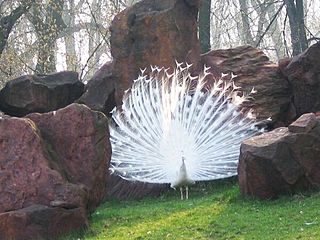 W
WKoinophilia is an evolutionary hypothesis proposing that during sexual selection, animals preferentially seek mates with a minimum of unusual or mutant features, including functionality, appearance and behavior. Koinophilia intends to explain the clustering of sexual organisms into species and other issues described by Darwin's Dilemma. The term derives from the Greek, koinos, "common", "that which is shared", and philia, "fondness".
 W
WLandscape genetics is the scientific discipline that combines population genetics and landscape ecology. It broadly encompasses any study that analyses plant or animal population genetic data in conjunction with data on the landscape features and matrix quality where the sampled population lives. This allows for the analysis of microevolutionary processes affecting the species in light of landscape spatial patterns, providing a more realistic view of how populations interact with their environments. Landscape genetics attempts to determine which landscape features are barriers to dispersal and gene flow, how human-induced landscape changes affect the evolution of populations, the source-sink dynamics of a given population, and how diseases or invasive species spread across landscapes.
 W
WA mating pool is a concept used in evolutionary computation, which refers to a family of algorithms used to solve optimization and search problems.
 W
WMicroevolution is the change in allele frequencies that occurs over time within a population. This change is due to four different processes: mutation, selection, gene flow and genetic drift. This change happens over a relatively short amount of time compared to the changes termed macroevolution.
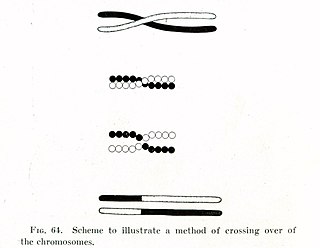 W
WIn evolutionary genetics, Muller's ratchet is a process in which absence of recombination, especially in an asexual population, results in accumulation of deleterious mutations in an irreversible manner. This happens due to the fact that in the absence of recombination, offspring at least bear the same mutational load as their parents. Muller proposed this mechanism as one reason why sexual reproduction may be favored over asexual reproduction, as sexual organisms benefit from recombination. The negative effect of accumulating irreversible deleterious mutations may not be prevalent in organisms, which, while they reproduce asexually, also undergo other forms of recombination. This effect has also been observed in those regions of the genomes of sexual organisms that do not undergo recombination.
 W
WThe Neutral Theory of Molecular Evolution is an influential monograph written in 1983 by Japanese evolutionary biologist Motoo Kimura. While the neutral theory of molecular evolution existed since his article in 1968, Kimura felt the need to write a monograph with up-to-date information and evidences showing the importance of his theory in evolution.
 W
WNotch homolog 2 N-terminal-like is a protein that in humans is encoded by the NOTCH2NL gene. It appears to play a key role in the development of the brain.
 W
WThe popular sire effect occurs when an animal with desirable attributes is bred repeatedly. In dog breeding, a male dog that wins respected competitions becomes highly sought after, as breeders believe the sire possesses the genes necessary to produce champions. The popular sire is often bred extensively with many females. This can cause undetected, undesirable genetic traits in the stud to spread rapidly within the gene pool. It can also reduce genetic diversity by the exclusion of other males.
 W
WA population bottleneck or genetic bottleneck is a sharp reduction in the size of a population due to environmental events such as famines, earthquakes, floods, fires, disease, and droughts or human activities such as specicide and human population planning. Such events can reduce the variation in the gene pool of a population; thereafter, a smaller population, with a smaller genetic diversity, remains to pass on genes to future generations of offspring through sexual reproduction. Genetic diversity remains lower, increasing only when gene flow from another population occurs or very slowly increasing with time as random mutations occur. This results in a reduction in the robustness of the population and in its ability to adapt to and survive selecting environmental changes, such as climate change or a shift in available resources. Alternatively, if survivors of the bottleneck are the individuals with the greatest genetic fitness, the frequency of the fitter genes within the gene pool is increased, while the pool itself is reduced.
 W
WQuantitative genetics deals with phenotypes that vary continuously —as opposed to discretely identifiable phenotypes and gene-products.
 W
WThe reindeer is a widespread and numerous species in the northern Holarctic, being present in both tundra and taiga. Originally, the reindeer was found in Scandinavia, eastern Europe, Russia, Mongolia, and northern China north of the 50th latitude. In North America, it was found in Canada, Alaska, and the northern conterminous USA from Washington to Maine. In the 19th century, it was apparently still present in southern Idaho. It also occurred naturally on Sakhalin, Greenland, and probably even in historical times in Ireland. During the late Pleistocene era, reindeer were found further south, such as at Nevada, Tennessee, and Alabama in North America and Spain in Europe. Today, wild reindeer have disappeared from many areas within this large historical range, especially from the southern parts, where it vanished almost everywhere. Populations of wild reindeer are still found in Norway, Finland, Siberia, Greenland, Alaska, and Canada.
 W
WSegregating sites are positions which show differences (polymorphisms) between related genes in a sequence alignment. Segregating sites include conservative, semi-conservative and non-conservative mutations.
 W
WIn population genetics, a selection coefficient, usually denoted by the letter s, is a measure of differences in relative fitness. Selection coefficients are central to the quantitative description of evolution, since fitness differences determine the change in genotype frequencies attributable to selection.
 W
WIn genetics a single-nucleotide polymorphism is a substitution of a single nucleotide at a specific position in the genome, that is present in a sufficiently large fraction of the population.
 W
WIn the context of the recent African origin of modern humans, the Southern Dispersal scenario refers to the early migration along the southern coast of Asia, from the Arabian peninsula via Persia and India to Southeast Asia and Oceania Alternative names include the "southern coastal route" or "rapid coastal settlement"., with later descendants of those migrations eventually colonizing the rest of Eurasia, the remainder of Oceania, and the Americas.
 W
WSpecies distribution is the manner in which a biological taxon is spatially arranged. The geographic limits of a particular taxon's distribution is its range, often represented as shaded areas on a map. Patterns of distribution change depending on the scale at which they are viewed, from the arrangement of individuals within a small family unit, to patterns within a population, or the distribution of the entire species as a whole (range). Species distribution is not to be confused with dispersal, which is the movement of individuals away from their region of origin or from a population center of high density.
 W
WThe swamping argument is an objection against Darwinism made by Fleeming Jenkin. He asserted that an accidentally-appearing profitable variety cannot be preserved by natural selection in the population, but should be 'swamped' with ordinary traits. Population genetics helped to overcome this logical difficulty.
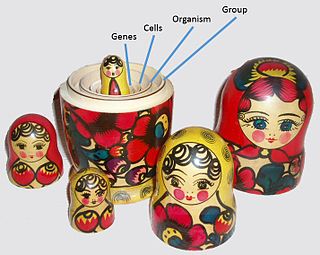 W
WA unit of selection is a biological entity within the hierarchy of biological organization that is subject to natural selection. There is debate among evolutionary biologists about the extent to which evolution has been shaped by selective pressures acting at these different levels.
 W
WWolf distribution is the species distribution of the wolf. Originally, wolves occurred in Eurasia above the 12th parallel north and in North America above the 15th parallel north. However, deliberate human persecution has reduced the species' range to about one-third, because of livestock predation and fear of wolf attacks on humans. The species is now extirpated in much of Western Europe, in Mexico, and much of the United States. In modern history, the gray wolf occurs mostly in wilderness and remote areas, particularly in Canada, Alaska and the Northern United States, Europe and Asia from about the 75th parallel north to the 12th parallel north. Wolf population declines have been arrested since the 1970s, and have fostered recolonization and reintroduction in parts of its former range, due to legal protection, changes in land-use and rural human population shifts to cities. Competition with humans for livestock and game species, concerns over the danger posed by wolves to people, and habitat fragmentation pose a continued threat to the species. Despite these threats, because of the gray wolf's relatively widespread range and stable population, it is classified as Least Concern on the IUCN Red List.